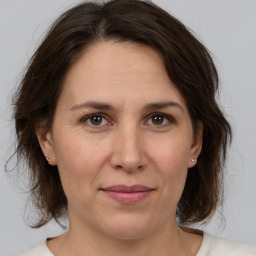Organisation behaviour reflects the working behaviour of employees as they decide whether an organisation successfully achieve its pre-determined goals or not. 1spatial, plc is an organisation delivering real value by making data current, automated, complete and consistent. You are reflecting an HR manager of a medium-sized organisation in which you need to evaluate the culture that your chose organization follows as you wish to enhance the performance level of your organisation by implementing suitable culture at workplace. To do so, you need to address following task to achieve expected outcomes:
- Assess the impact of organisation's culture and power on working behaviour of employees.
- Examine various motivation methods for individuals as well as teams.
- Determine the ways to effectively cooperate with other members of team.
- Describe different concepts and philosophies relating to organisational behaviour in a given context.
INTRODUCTION
Organisation behaviour refers to the study of the way through which an individual interacts within a group (Wong, Wong and Ngo, 2012). The core idea of this learning is to make more effective business enterprises. In other words, it is defined as a scientific approach which is being utilised for the management of employees in a company. This theory is also applied to meet the purposes of human resource for increasing overall productivity of corporation by motivating personnel's performing at workstation. The current project is made for highlighting the importance of organisation behaviour within work premises. In this regard, an enterprise named as 1spatial, plc is considered which is dealing with the sector of Computer software. It is a medium sized venture that has grown well in United Kingdom at minimum time interval by applying the constructs of OB. They are having turnover of around £10M to £20M. One of their aim is to develop themselves and make enlargement in terms of size and productivity. For doing this, they need to focus on the impacts of power, culture & politics upon behaviour as well as performance of team members. Get Best History Homework Help from Instant assignment help.
TASK 1
P 1 Effects of culture, power and politics on team behaviour and performance
The HR manager of 1spatial, plc wishes to know about the impacts of politics, tradition as well as power on the performances and behaviours of group members working at their corporation. In this regard, Handy model can be applied since it describes various kinds of culture present within workplaces. Employer would easily attain interpretation on such effects by observing below mentioned facts:
- Power culture: Organisation which is having this type of tradition usually give authorization of taking important decisions in hands of few people. The beauty of this culture is its instant decisional making process as authority is provided to limited persons (Unsworth, Dmitrieva and Adriasola, 2013). On the other hand, some drawbacks are also present that is all workforces must have to perform their official duty according to the commands of such decision makers. Thereby, freedom of entire employees gets negatively affected since they are unable to express their point of views among high post employers.
- Task culture: Enterprises generally adopt task culture for eliminating conflicts rising at workplaces by creating effectual teams. The primary motive of making team is to start practices of performance in a different style i.e. working together for achieving mutual aim and ambition. Therefore, here - by accomplishment of commercial task is given more importance. It is to be noted that around four (4) to five (5) personnel's fall under a group for sharing their ideas and opinions in order to complete particular business activity. A team leader is recruited whose responsibility is to guide each and every participant who are working in specific unit. These units head are also liable to resolve issues that occurs in context to official chores.
- Person culture : Companies while applying this culture usually take a back seat by giving each power and privileges to all staffs performing at authorised sites. Therefore, people receive freedom of speaking anything, representing their views, taking final decisions, etc. thus do not suffer from critical situations. This has noticed that personnels used to visit organisational site for their personal motive that is gaining wages without any interruption. Whereas they do not look after issues of corporations, thereby duty is not carried on by them. Hence, enterprises following this tradition are able to create good relationship with workforce but faces loss at last.
- Role culture : In this corporation-al culture, roles and responsibilities of each personnel is definite which is mainly being decided by managers. It is framed on the basis of past experiences, professional backgrounds, specialisation or expertness, educational qualifications, talents & skills of an individual (Thomson and Van Niekerk, 2012). Herein, employees can attain authority by becoming trustworthy and valuable for organisation.
By examining above mentioned types of culture, employer of 1spatial, plc can determine about the effects of tradition or working style on the performance of a team. It is now clear that for creating a feeling of enthusiasm and motivation, company should carry on their business actions by following Task culture. This will definitely help managers in inspiring participants working under organisation. In order to do so, they have to form particular groups having limited number of persons. Along with this, a team head should be assigned for guiding them in proper manner so that any issues associated with work could be effectively resolved. Staff members get devoted towards their duties by receiving an experienced guide. Thus, they will give best efforts in attaining goals of 1spatial, plc. We have the best writers who will help you to complete your chemistry Homework Help.
In work premises, politics impacts antagonistically on the behaviour of workers. This has observed that a person having superior designation commonly become the major cause of generating inappropriate actions. This phenomenon is known as clever strategies or bad politics since those people used to frame particular plan for insulting other employees or colleagues. The another reason of doing the same is to gain appraisals by seeking attention of supervisors at workstation. Such whole schemes generate unhealthy environment as other staffs get demotivated and depressed due to those games which is played against those members. Therefore, employers of 1spatial, plc ought to examine these kind of problems related to politics going on their work - location for making a positive surrounding. This may assist all employees by motivating them appropriately and building a strong workforce.
At the same time, power existing in hands of superiors also influence performing action of whole team. If authorisation of determining about specific business action present in hand of wrong people then, it is obvious that company is going in the way of depletion. On the other side, improvement could be done by generating belief of inspiration in heart of workers. When participants falling under a unit get motivated, they would work for the upliftment of venture by raising their productivity in effectual manner (Ramachandran and et. al., 2011). Therefore, this is vital to give power in shoulders of such an individual who is known for its honesty and confidence nature within firm. Besides the similar those people should be capable of taking optimistic judgements by observing both sides of matter. If all these characteristics would present in a staff, he or she will make correct determination or decision. Such kind of people give opportunities of improvement to every participants working in a team. Thereby, it can be said that by achieving chances of growth, employees get inspired and start performing for the welfare of its association. Hence, 1spatial, plc ought to supply powers in correct hands by noticing above written qualities.
Read also:Unit 19 Marketing Essentials BTEC Level 5
Marketing Essentials Level 4 Regent College
TASK 2
P 2 Role of content and process theories of motivation within organisation
1spatial, plc has also framed specific goal like all IT company. They wish to gain strong market position in the sector of Information & Technology. Besides this, Owner of firm desires to earn high sum of profits by raising their production level so that they can transform themselves into a large scale IT association (Odetunde, 2013). Currently, business operation is being held at UK, but they also want to run their commercial activities in each corner of world. Thus, entrepreneur is hoping to gain dominance in IT industry. For achieving the identical ambitions, CEO of this company attempts to introduce innovative applications for customers in order to gain their attention. But it is to be noted that, this may require cooperation of team associates as without attaining contribution of these members, firm could not build any new and innovational software. For gaining coordination and assistance of all participants working at organisation, 1spatial, plc have to create a motivated and healthy surrounding. This can be accomplished by considering below mentioned theories of motivation. Generally, two philosophies are applied under work - premises for generating a light of inspiration within the soul of workforces. These theories are following :
Content theory
It is treated as one of the oldest hypothesis mainly designed for creating encouragement in workers. This is also famous as need theories since concepts of basic requirement of an individual is highlighted via such philosophies.
'Maslow's Hierarchy of Needs'
This is considered as an eminent content theory. Abraham Maslow had proposed five level of necessitates in the year of 1943 for a human being which is explained as follows :
- Psychological needs : This fall under the categories of fundamental requirements of human that are water, garments, house, food, etc. 1spatial, plc should concentrate on these need (Latham, 2012). When an employee receives such things in their daily life, then they get satisfied and after being contend they start working for the upliftment of organisation by giving best efforts.
- Social needs : Man is a social animal thus require affection, love, care, friendship, societal relations and belongingness from society. Hence, company should make them feel same in order to gain their coordination while working at premises.
- Safety needs : This kind of need comprises of safety against environmental, affection-al and physical issues. Enterprise have to detect problems related to these factors and reduce the similar by eliminating such things from workplace. In this regard, financial security, safeguarding from wild animals, security related to family or relatives, well - being safety, etc. ought to be provided by 1spatial, plc to their team associates. This will definitely bring a fragrance of enthusiasm in environment of corporation.
- Esteem needs : It is to be noted that esteem is of two kind that is internal & external esteem needs. The first type comprises of achievement, self respect and inner confidence, competences and freedom. On the other hand, second type includes power, position, admiration, recognition & attention. Each individual wants to attain these qualities and facilities for being satisfied as well as motivated. Therefore, 1spatial, plc should give needs affiliated with esteem to their team members for inspiring them effectively.
- Self - actualization need : This is including the urge to become what a person is capable of acquiring or what level of potentiality is present in that individual to acquire. Thereby, it is involving the necessity of improvement and self - happiness or gratification. This also comprised of wishes linked with attaining more cognition, creativeness, social services along with becoming aesthetic (Kazemipour and Mohd Amin, 2012). CEO of 1spatial, plc should consider this need and try to supply the same to their entire workforce for making them motivated properly.
Process theory of motivation
It is totally variant in nature in comparison to Maslow's Hierarchy of Needs. The main motive of designing this philosophy is to depict how and why motivation occurs. Some of the hypothesis falling under such type of theory are following :
- Goal setting theory : Edwin Locke had presented a conception regarding significance of motivation within an enterprise. As per his point of views, intention to carry on work for reaching a goal is supposed as one of the main source of inspiration. Pre - setted aims and objectives of a corporation shows what have to be done by a worker for attaining prosperity. Additionally, it also highlights the level of attempts that is required for increase or boosting the same. According to Edwin, if a goal would be complex and difficult in nature, then workers may pay more concentration or attention towards those ambitions as they treat it as a challenge (Ifinedo, 2012). Thus, try a lot to achieve or reach the similar target. Therefore, it can be said that 1spatial, plc should frame challenges in the form of missions for whole workforce. The main motto of creating such a challenging goal is to rise existing scale of enthusiasm in employees and encourage them to face such obstructors to accomplish that determined mission. Therefore, creation of tough ambitions give optimistic impacts on the performance of venture itself along with team members as well. As a fruitful outcome, current level of production of 1spatial, plc get enhanced drastically. At the same time, quality of manufactured products and services also become improved since participants are now paying more attention towards competing a destination.
- Equity theory : This hypothesis was firstly developed by John Stacey Adams in the year of 1963. According to him, a worker must be treated in equal way, thus discrimination should not be done on any ground. Mostly partiality is seen at corporate level which occurs on the basis of caste, colour, sex, religion, age, relation, gender and many more. This kind of treatment creates a felling of depression in human being (Hashim and Wok, 2014). As a bad result they get demotivated. Hence according to the thought of Adams, this factor is considered as one of the main obstructor that resist someone from becoming inspired. Hence, Adams stated in his theory that owners as well as employers of every venture ought to generate an environs of equivalence at workstation. This will surely give fruitful result to organisation by making their staff members enthusiastic. Therefore, 1spatial, plc should cater equal opportunity of growth and development to each person working for the upliftment of company. It will also reduce stress level from their minds and help them in manufacturing best quality goods and services. By doing these tasks, manager of 1spatial, plc can follow principles of Equity theory and make their team inspired as well as motivated.
In addition to above listed philosophies, there are various other process theory of motivation which can be used by referred corporation at their association in making their group members inspired, eager, full of energy, motivated and innovative. Those theories are Self - Efficacy and concept of reinforcement. This will help in upgrading overall scale id productivity along with profitability. 1spatial, plc needs to apply such philosophy for achieving their aims and objectives before specific time interval.
We tend to help you at every step regarding Academic Assistance
Get your Assignments Now!
TASK 3
P 3 Explain what makes an effective team as opposed to an ineffective team
1spatial, plc consist of different nature of workers as they belongs to different places. This is why they are having totally dissimilar ideas on particular subject of business. When employers of this firm tries to make effective team, it suffers from various difficulties due to the presence of variances in their thoughts. This leads to the issue of non-cooperation within organisation which is not good for the welfare of company. In order to deal with such a situation, 1spatial, plc ought to implement Tuckman's Team Development Model. It will assist them in making an effectual team as opposed to in - effective one. There are some steps which should be taken by employers as well as team heads of organisation for building skilled group of people. The description of those stages are listed below :
- Forming : Initially, before working together, personnels are unaware from their duty and responsibility as it is not being cleared to them (Chevallier and et. al., 2012). Thus, prior to design any team, grump leaders should cater specific work to each person as per their ability and qualification. By this way, action of manufacturing innovative software would get started at 1spatial, plc. Afterwards employees existing at workstations began performing together and also become familiar from one another.
- Storming : Since employees of 1spatial, plc are from different background, therefore during execution of any plan regarding formation of software, some of the conflicts may arises. The increase in conflictual condition give negative impact on the performances of workers as they might not able to perform by paying attention on theme of the work. Thus, it is necessary to remove such conflicts from team in order to maintain smoothness at working place. Mentors existing at 1spatial, plc requires to focus on fixing such issues by creating a felling of coordination among them. During similar interval of time, each person tries to prove itself best by expressing their skills and talent.
- Norming : For removing confusion from the minds of every contestants of a unit, duties and roles that is being played by them should be depicted so that no one face any kind of problem related to their obligations or official chores (Burrell and Morgan, 2017). While clearing responsibilities, conflicts get automatically eliminated as every one become attentive towards its goal. Supervisors existing at 1spatial, plc ought to give appreciation to those members who show best presentation. This is done for expressing their abilities and positive attitudes towards work. By doing so, participants get convinced to perform better in next session.
- Performing : At this stage, plans of action prepared by members of each team will get implemented. This is why current step is named as 'performing'. Employers and mentors of 1spatial, plc ought to encourage every associates in giving their best effort by working well. Thereby, assurance regarding achievement of aims and objectives is created by participants of groups.
- Adjourning : This is treated as last stage of team building program. Reports of execution associated with professional chores or projects would be formed by each team member at the end of session. This will show their performances in respect to attainment of success. Subsequently, submission of those reports will be done for checking similar project's quality. If any defects may arises while checking, then managers give commands to modify that project and submit it again. At last approval of similar task will come from the side of team leader. Then, this session get ended.
TASK 4
P 4 Concepts and philosophies of organisational behaviour within organisational context
1spatial, plc should understand the constructs and theories affiliated organisational behavioural. This can be better interpreted by examining below mentioned concepts of OB :
Path goal theory :
This philosophy is used for depicting the style and behaviours of leaders. The main ambition of this theory is to motivate personnels regarding their duty and job roles. According to this theory, there are usually four types of leadership behaviour which is described below :
- Achievement - oriented behaviour : Challenges and objectives is being determined by leaders posing such kind of nature. In addition to this, they provide training and preparation classes to those participants who are weak in the field of operation management (Burnard and Bhamra, 2011). The main objective of this type of leaders is to challenge employees to improve their working skills and capabilities.
- Supportive leader behaviour : Most of the leaders used to eliminate psychological problems rising at workstation. They assist those people who are stressed and depressed due to the pressure of job and seniors. Thus, aim of leaders is to remove frustration and create healthy environment at organisation.
- Directive path goal clarifying behaviour : In this leadership, confusion in terms of functions of job or duty is being cleared. Here, team heads commonly show time schedule and strategies of carrying out tasks in order tom accomplish the similar before setted dead line.
- Participative leader behaviour : Leaders of this type of nature and behaviour generally interact with their followers at the time of making any decisions or judgements. The main motive of doing so is to motivate personnels working under a team. People feel proud on itself as they understand themselves an important part of enterprise. They happily share their views and opinions on particular topic so that correct decisions can be made.
Social capital theory :
1spatial, plc should also pay attention of some other theory known as social capital theory. According to this, managers of corporation should create societal relationship with their team members in order to feel them satisfied and happy (Bissell and Dolan, 2012). Since man is a social animal, they wish to be work in a such an environment where they receive love, respects, attention, care, trust, relationship, etc. These all factors supports them a lot while giving better presentation in context to their responsibilities. Therefore, leaders and employers of 1spatial, plc should focus on making a society within their work premises. For doing this, they need to create a relationship of trust, network of coordination and cooperation, fidelity, etc. from each of their staff members. In addition to this, team heads are liable to generate a decorum of social relation amongst group which can be accomplished by promoting compromising, removing confusion regrading duty, creating a pluralistic and bargaining surrounding.
CONCLUSION
From above based report, it can be summarised that each and every company should understand about the significance of content and process theories as it helps in generating motivation within workers. A motivated employee is considered as equivalent to a effective group. Therefore, it is very necessary to inspire personnel towards their duty so that they attempt best in accomplishing all tasks allocated to them. This in turn helps in increasing current production of venture along with its profitability and efficiency. Apart from this, firms require to determine the impacts of power, culture and politics on the working capabilities of a team and organisation itself. This is important because these all factors used to give great influences on the performance of a group. Herein, different philosophies associated with building an efficient team is described which helps 1spatial, plc in creating a strong unit of workers. In addition to same, weakness existing in an individual can be eliminated by applying such theories.
REFERENCES
- Bissell, G. and Dolan, P., 2012. Organisational behaviour for social work. Policy Press.
- Burnard, K. and Bhamra, R., 2011. Organisational resilience: development of a conceptual framework for organisational responses. International Journal of Production Research. 49(18). pp.5581-5599.
- Burrell, G. and Morgan, G., 2017. Sociological paradigms and organisational analysis: Elements of the sociology of corporate life. Routledge.
- CHEN, S.H. and et. al., 2013. Organisational support, organisational identification and organisational citizenship behaviour among male nurses. Journal of nursing management. 21(8). pp.1072-1082.
- Chevallier, C. and et. al., 2012. The social motivation theory of autism. Trends in cognitive sciences. 16(4). pp.231-239.
- Hashim, J. and Wok, S., 2014. Predictors to employees with disabilities' organisational behaviour and involvement in employment. Equality, Diversity and Inclusion: An International Journal. 33(2). pp.193-209.
- Ifinedo, P., 2012. Understanding information systems security policy compliance: An integration of the theory of planned behavior and the protection motivation theory. Computers & Security. 31(1). pp.83-95.
- Kazemipour, F. and Mohd Amin, S., 2012. The impact of workplace spirituality dimensions on organisational citizenship behaviour among nurses with the mediating effect of affective organisational commitment. Journal of nursing management. 20(8). pp.1039-1048.
- Latham, G.P., 2012. Work motivation: History, theory, research, and practice. Sage.
- Odetunde, O. J., 2013. Influence of transformational and transactional leaderships, and leaders' sex on organisational conflict management behaviour. Gender and Behaviour 11(1). pp.5323-5335.
- Ramachandran, Y. and et. al., 2011. Emotional intelligence, emotional labour and organisational citizenship behaviour in service environments. International Journal of Work Organisation and Emotion. 4(2). pp.136-157.
- Thomson, K. and Van Niekerk, J., 2012. Combating information security apathy by encouraging prosocial organisational behaviour. Information Management & Computer Security. 20(1). pp.39-46.
- Unsworth, K. L., Dmitrieva, A. and Adriasola, E., 2013. Changing behaviour: Increasing the effectiveness of workplace interventions in creating proÂenvironmental behaviour change. Journal of Organizational Behavior. 34(2). pp.211-229.
- Wong, Y. T., Wong, C. S. and Ngo, H. Y., 2012. The effects of trust in organisation and perceived organisational support on organisational citizenship behaviour: A test of three competing models. The International Journal of Human Resource Management. 23(2). pp.278-293.
- Wood, J. M. and et. al., 2016. Organisational behaviour: Core concepts and applications. John Wiley & Sons Australia, Ltd.
Also read- Organisational Behaviour























